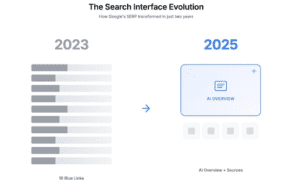BTST, which stands for Buy Today, Sell Tomorrow, is a popular trading strategy employed by traders to capitalize on short-term price movements in stocks. Unlike intraday trading, where shares are bought and sold on the same day, BTST trading allows traders to sell the shares on the following day, either in cash or through futures and options.
The conventional process of stock market transactions involves a two-day settlement period (T+2) for purchased shares to reflect in the trader’s demat account. However, BTST trading offers a solution for traders who wish to sell their shares immediately, even before the delivery process is complete. Brokers like Alice Blue facilitate seamless BTST trading execution.
One of the primary advantages of BTST trading is that it provides traders with two additional trading days to take advantage of price momentum. This can be beneficial for those who are not comfortable with the high-risk nature of intraday trading. By extending the holding period, traders have more time to ride the price fluctuations and potentially secure profits.
Another benefit of BTST trading is that it helps traders save on demat debit transactions. Since the delivery of the trade has not yet occurred, traders can avoid incurring additional charges associated with the delivery process.
Understand dematerialization meaning and its significance in the financial world. Click the link to read our insightful article.
However, it is essential to understand the dynamics and considerations involved in BTST trading. While it provides extended holding time, it also carries certain risks and limitations. For instance, if an unexpected event occurs after market hours, resulting in a knee-jerk reaction in the stock market, traders may face losses as they cannot react immediately. Market volatility and unforeseen events can significantly impact the value of stocks overnight, and BTST traders must be prepared to manage such risks.
Additionally, it is important to note that BTST trades take place in the cash segment, and unlike intraday trades, brokers do not offer margin money for these trades. This means that traders must have sufficient funds in their trading accounts to execute BTST trades, without the benefit of leveraging their positions. Traders should carefully consider their risk tolerance and available capital before engaging in BTST trading.
Since September 2020, the market regulator SEBI has implemented a mandatory 40 percent margin requirement (20 percent each on the buy and sell sides) for BTST trades. This means that traders need to block a significant portion of their funds as margin to execute BTST trades. While this margin requirement aims to enhance risk management and protect traders, it can also tie up funds and limit liquidity, potentially causing traders to miss out on other attractive trade opportunities.
To maximize the chances of success in BTST trading, traders should employ various strategies and techniques. Technical analysis plays a crucial role in identifying potential price movements. By analyzing charts, patterns, and indicators, traders can spot trends and make informed decisions regarding entry and exit points for their BTST trades.
One technique involves monitoring price breakouts on candlestick charts. Traders can run a 15-minute candlestick chart of the stock they intend to trade for BTST purposes. This chart provides valuable insights into the buying and selling trends based on opening, high, low, and closing prices. The most significant price action often occurs in the final hours of trading, particularly between 3 pm and 3.30 pm. Suppose the stock price surpasses its resistance level during this period. In that case, it suggests a potential uptrend that may continue into the next trading session, indicating that holding the stock might be beneficial. Conversely, if the price drops below its support level, it may be an indication to sell the stock on the same day.
Furthermore, selecting the right stocks for BTST trading is crucial. Liquidity is a key factor to consider when choosing stocks. Highly liquid stocks ensure there are enough buyers in the market, allowing traders to exit their positions without difficulty. Large-cap stocks and those included in market indices often exhibit high liquidity, making them attractive options for BTST trades. It is important to note that stocks categorized under the Trade to Trade group, GSM (Graded Surveillance Measures), or ASM (Additional Surveillance Measures) are not eligible for BTST trades.
Implementing proper risk management is also essential in BTST trading. Traders should set stop-loss and target prices before executing their BTST trades. A stop loss acts as a predetermined price level at which the sell order will be automatically executed, limiting potential losses. It serves as a risk management tool to protect traders in case the stock price moves unfavorably.
In conclusion, BTST trading offers traders an opportunity to benefit from short-term price fluctuations in stocks. It provides extended holding time, allowing traders to capitalize on price momentum. However, it is important to be aware of the risks involved, such as unexpected market events and margin requirements. By employing effective strategies, conducting thorough technical analysis, and practicing proper risk management, traders can enhance their chances of success in BTST trading.
Unlock the Potential of BTST Trading: Discover Strategies and Advantages. Read Now!



































